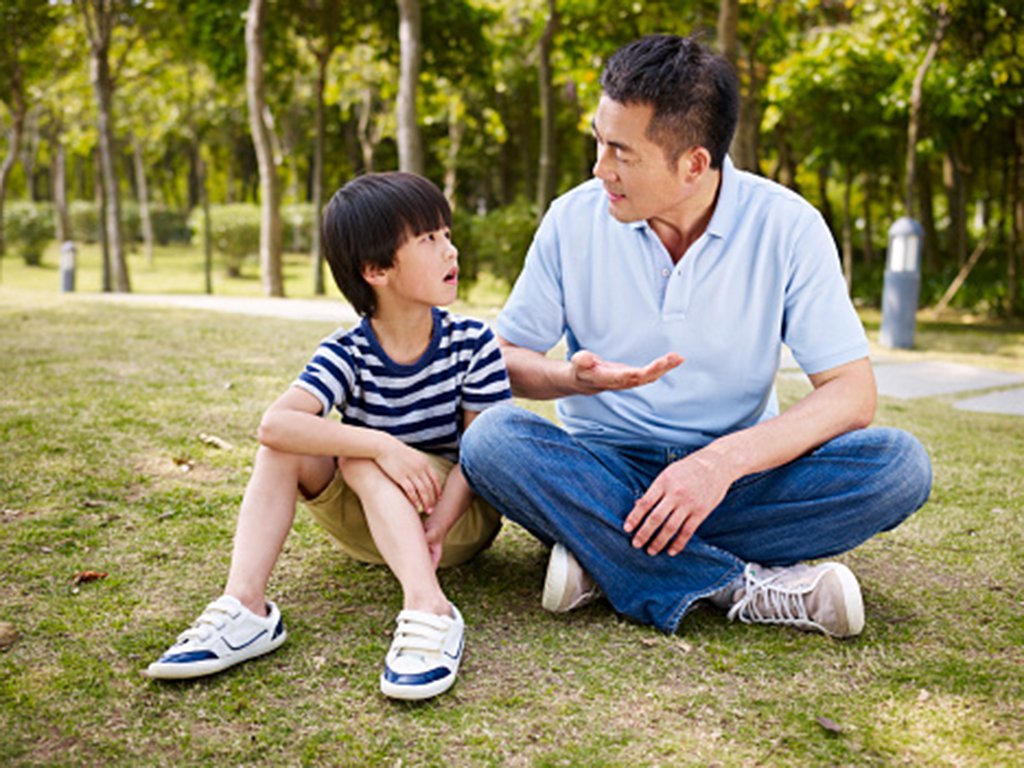Children who have difficulty communicating their emotions may resort to acting out in negative ways, such as hitting themselves or others, throwing things or shutting themselves in their room.
Photo credit: GETTY IMAGES
We can help children manage their impulses by talking about the different emotions that affect how they feel every day.
The process takes time, love and patience. But it is not impossible. And when children can finally say, “I’m upset” instead of throwing a tantrum, or “I feel sad” rather than crying uncontrollably, they’re able to manage feelings in a healthy, constructive way.
1. Remember It’s Never Too Early.
You can start teaching babies about emotions before they can even say their first words! After all, babies are always trying to tell us something. They cry to communicate how they feel — hungry, sleepy, cold or uncomfortable.
Talk to your babies while you’re changing their diaper or feeding them. Tell them in a soothing voice, “You’re crying because you didn’t have a nap today, and now you’re extra tired.”
Communicating these feelings out loud can help babies start to develop connections between emotions and behaviors. And as they grow older, it’s also great practice for you to observe and talk about your children’s feelings.
2. Grow Their Emotional Vocabulary
Every situation is a teachable moment. As you talk to your children, help them to put names to their emotions and feelings. This will add to their emotional vocabulary. For example, “I understand you’re feeling sad because we had to leave the party,” or “Grandma is coming to visit—how exciting!”
Not only do keiki learn new words to identify how they feel, they also learn to recognize cause and effect—what actions may lead to feeling happy, frustrated or depressed.
3. Help Them Manage Feelings
As your children grow older, your conversations will evolve from identifying feelings to understanding how to manage them.
When your children say they feel upset, talk about what happened. Who was involved? How did they react? Get to the heart of what made them feel a certain way. This will help them connect various situations to certain emotions.
Talking openly about difficult feelings can help your children gain control over how they react to disappointment or anger.
Helping your children identify, communicate and manage feelings effectively is key to raising emotionally healthy and empathetic individuals.
Five Ways to Get Started
Exercise helps release “feel-good” endorphins. Find healthy activities the whole family can enjoy together, such as sports, running, surfing or other outdoor exercises.
Music, art and journaling can be great outlets for children to express their emotions. Make time to dance and sing. Provide art supplies for drawing and coloring. Write a story together.
Use cartoons, songs and books as an opportunity to talk about emotions, especially difficult ones. Watch a favorite TV show or read together. Discuss how a favorite character handled a scary situation.
If your child gets angry and acts out, don’t say, “Don’t be mad,” or focus on how they “should” feel. Let them know it’s OK to have feelings—but it’s not OK to hit a friend or throw toys.
Children can’t regulate and manage their feelings all the time. If your child has a meltdown, don’t get discouraged. Turn it into a teachable moment to talk about how they can communicate better next time.
Tina Porras-Jones is vice president of community building programs for Parents And Children Together, a leading Hawai‘i nonprofit providing social services and early childhood education to nurture the relationships that matter most for children and families.
Parents And Children Together is partnering with HONOLULU Family in a series of articles on creating safe and promising futures for Hawaii’s children and families.


